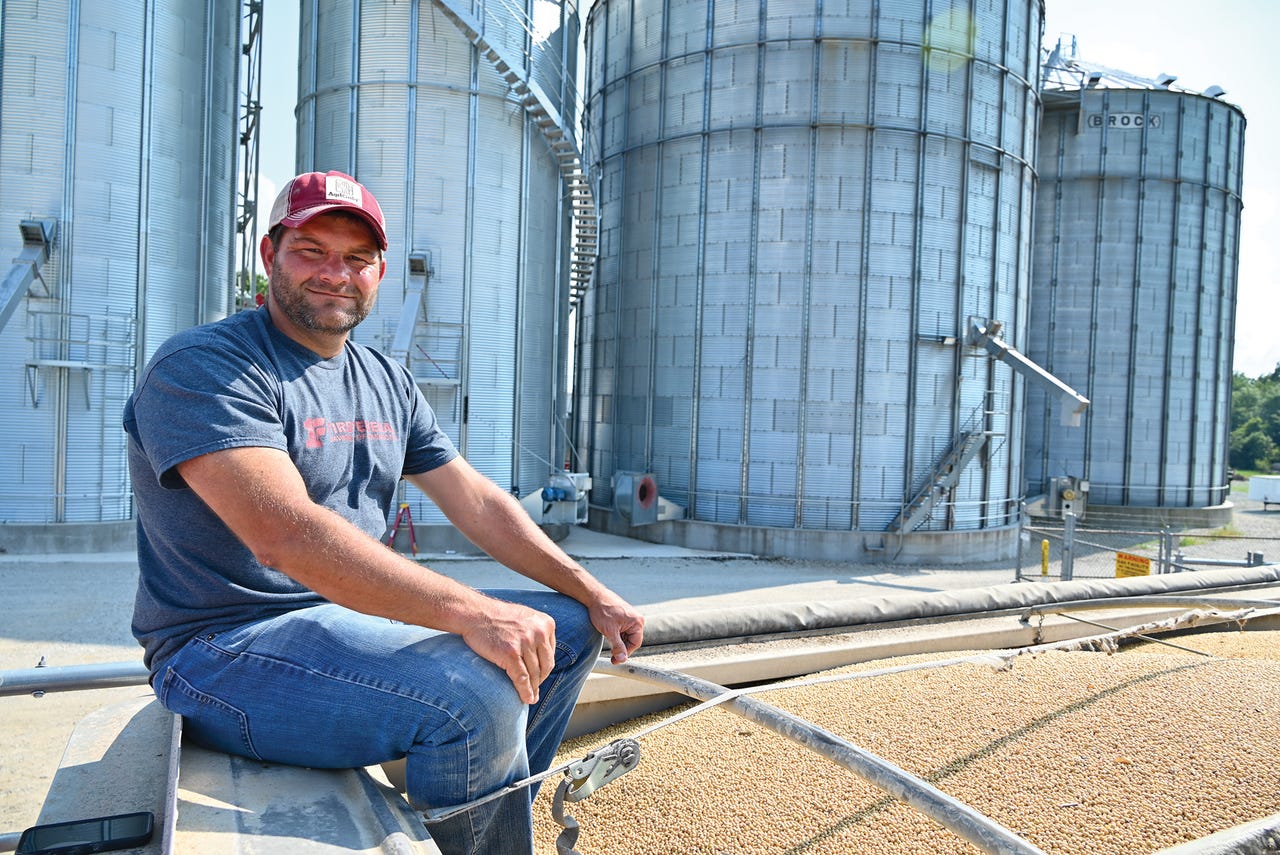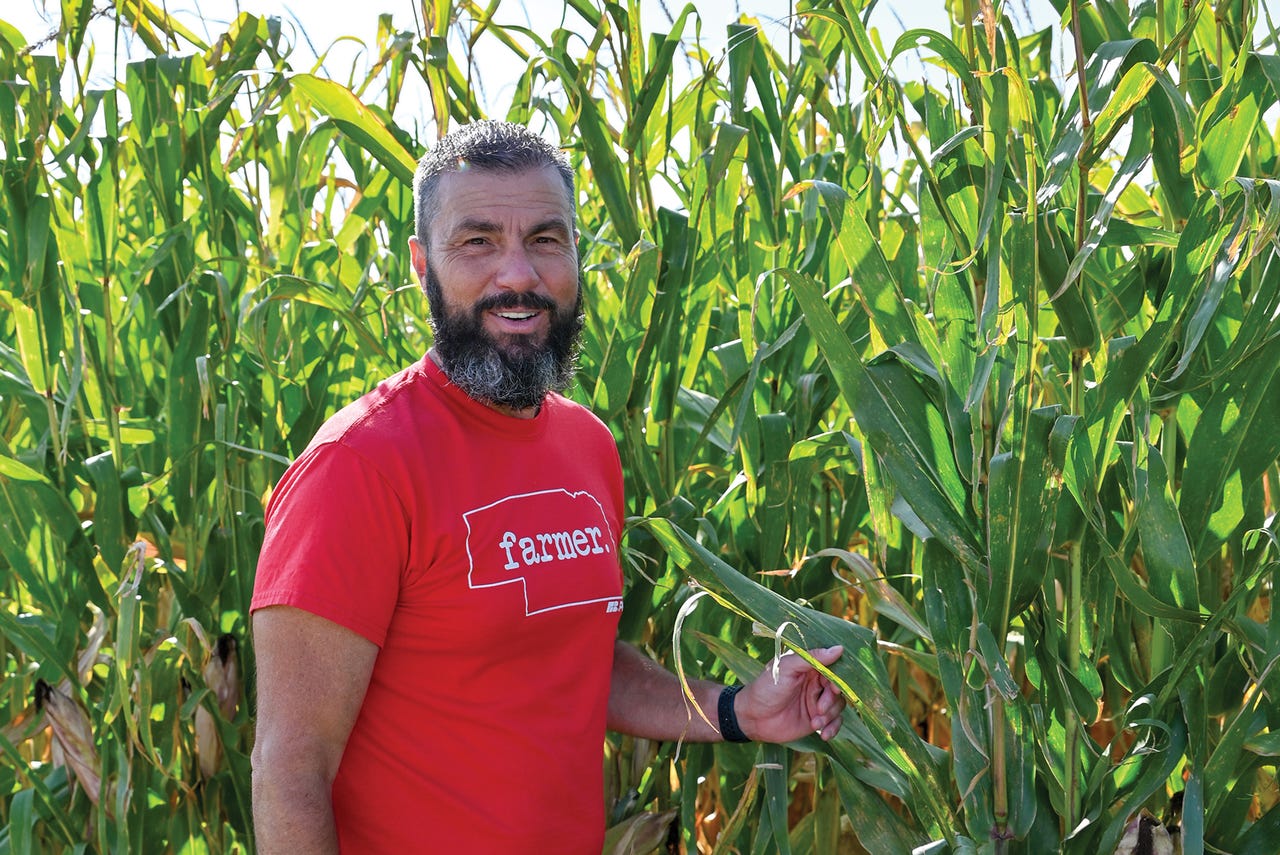“Bin better” might be a farmer’s colloquial answer to how 2025’s going.
But by binning better, 2025 might actually, well, get better.
Farmers invested substantially in on-farm storage facilities over recent years with mixed results in regard to whether they netted higher income from their crops.
But 2024 was a year when stored grain added profit, and 2025 is shaping up to be a year with few options other than storing grain in hopes of higher prices.
“With these prices being so low, we’re going to store all that we can,” says Josh England, who farms with his father, Max, and his uncle Jeff in Doniphan, Neb.
For this farming trio, “all we can” amounts to about half of their crop. Coming into harvest, however, England reports they’re about one-third sold on this year’s crop. They pre-sold some in 2024 and then added some more sales in February, which turned out to be near the high for corn. They added a few more sales in March and April but held tight in the months since.
Now they’re looking to sell the carry and hope they ultimately bring in prices high enough to cover the cost of also paying interest on their production loan.
To accomplish this, England says they contract a marketing company. “They help a lot with getting our basis set, getting the futures taken care of, setting a floor for us,” he says.
The comfortable sound in England’s voice as he runs through the variables on this year’s market could come from experience. This isn’t the first year this young farmer worked through high yields and low prices. Most recently, 2024 presented similar circumstances.
“It’s good that we’re going to have good yields again because we’re going to need them with these low prices,” England says. “I’d rather have lower yields and corn at $5.50 — or even $5.”
Faced with similar circumstances in 2024, Indiana farmers Brooks and Brandon Cardinal held onto 100% of their corn crop by loading the bins and bagging the rest.
When bins are full
Using a bagger adds about 15 to 20 cents a bushel to their costs, Brooks Cardinal says. They also bought a used bagger and a de-bagger in 2024. But they don’t need to include equipment cost in this year’s storage calculations.
“Last year, we came out really well with the bags,” Cardinal says. “We paid for our bagger and everything to do with the bags.”
Bagging corn, he says, was the difference between making a profit — or not.

The brothers again this year chose to hold onto their grain, declining to put a low value on their hard-earned crop. Delaying sales on some level also is a risk management strategy for the brothers.
“We’ve got a lot of risky ground. We have a lot of river bottom. We could have a disaster so quickly,” Cardinal says. “So, it’s really hard to do a lot of marketing until we know what we’ve got.”
Cardinal also speaks with an air of experience.
The experience also is hard-earned for Brandon Hunnicutt. Back over in Giltner, Neb., Hunnicutt made an unplanned return to the farm 20 years ago, smack-dab in the middle of prices lower than 2024 or 2025. “I didn’t come in at $8 corn,” he recalls. “I came in at $1.75 to $2 corn.”

Then he shakes his head. Maybe he’s clearing out those memories. Or maybe he’s confounded by the market. As Cardinal says, “We manage it one way, and then the next year, we try to manage it the same way and there’s something different.”
Tricky marketing
Few can read the hand the corn market is holding because the global market plays with more than one joker in the deck.
As England recalls, sometimes they’ve sold at good prices and seen the market go down, and sometimes they’ve sold at a lower price and seen the market go up.
For Arlan Suderman, chief commodities economist for StoneX and a farm kid himself, following the market and predicting the next move up or down is a passion and a profession. And there’s times when he’s still confounded. What he knows, however, aligns with what Cardinal, Hunnicutt and England show to be true: Farmers who focus on surviving this trough have the best chance to make it to the other side of this downcycle.
“The markets do go in cycles,” Suderman says. “If you look at the cycles, we tend to get a bull-market type of cycle about every 10 years. In between those 10 years, you can have ups-and-down times.”
Or sometimes, he says, the markets just stay down.
“If that happens, we’ve got a few more years to go before we hit that bull market,” Suderman says. “We really need to focus on survival mechanisms now to make sure that we’re in good position when that next bull market comes.”
So, bin it, bag it, pray over it. Just hold on.
“This downturn is probably more worrisome,” Hunnicutt says. “But I’m in a better position to get through it. Back then, I didn’t know what I didn’t know.”